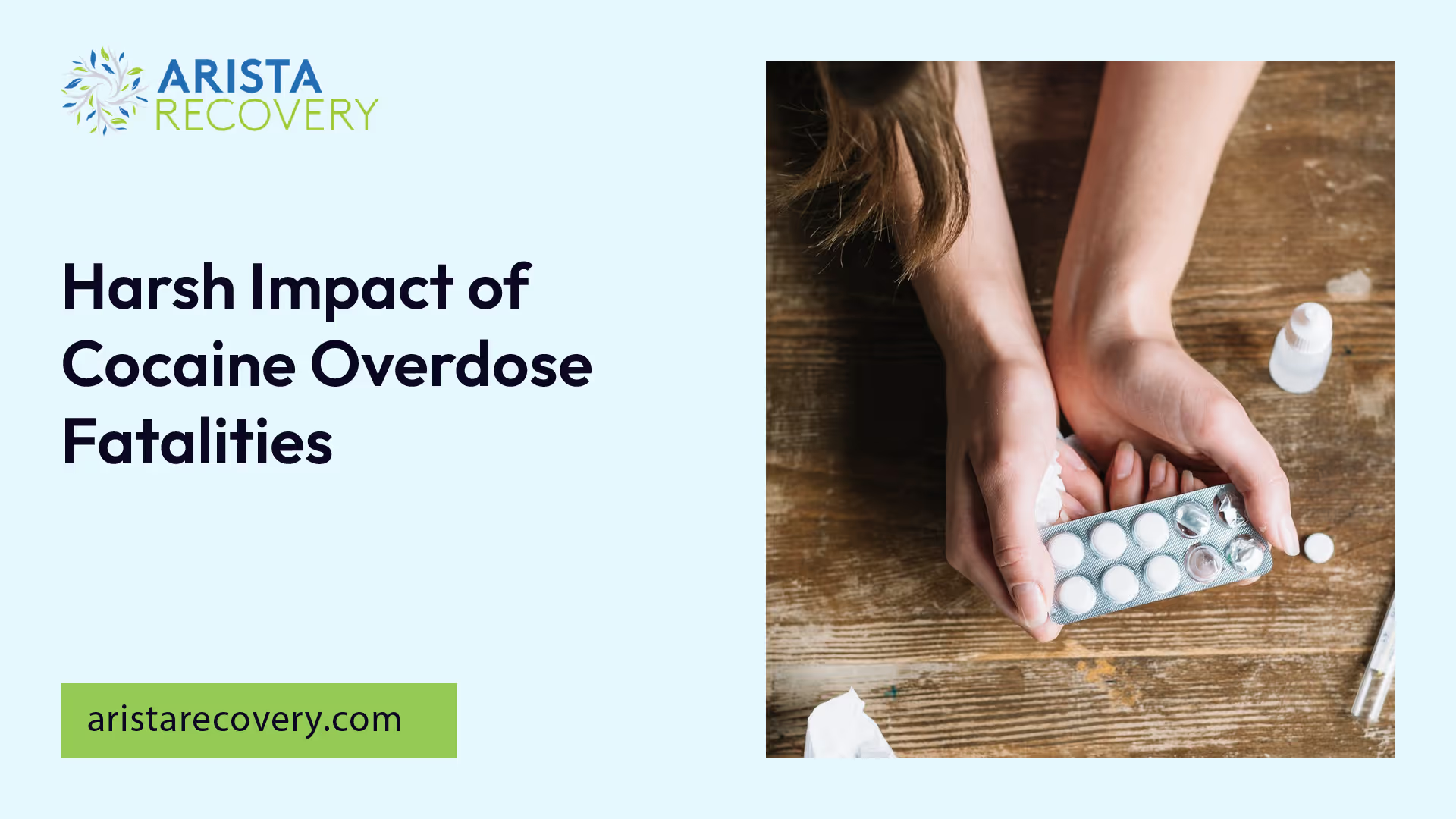Harsh Impact of Cocaine Overdose Fatalities

Understanding Drug Overdoses
Addressing the issue of cocaine overdose fatalities involves grasping the broader context of drug overdoses in general. This understanding includes recognizing the scope of overdose deaths and identifying trends related to polydrug use.
Scope of Overdose Deaths
The statistics related to stimulant overdoses, including cocaine, reveal a significant public health crisis. In 2022, approximately 57,497 individuals in the U.S. lost their lives due to stimulant-related overdoses. Of these, nearly 18,000 fatalities were attributed solely to stimulants, rather than combinations with opioids or other substances.

Cocaine-related deaths have shown alarming increases over the years. Reports indicate that cocaine-related fatalities escalated by about 251% from 2010 to 2018, with 14,666 deaths involving cocaine in 2018 alone. This trend marks the third consecutive year that cocaine-related deaths surpassed 10,000 in the United States.
The following table summarizes the increase in cocaine-related fatalities over recent years:
YearCocaine-Related Deaths2010~4,0002016~8,000201814,666202218,000 (stimulants)
Polydrug Use Trends
Polydrug use is a critical aspect of cocaine overdose fatalities. Many individuals who experience cocaine overdoses do so in conjunction with other drugs, especially opioids. The combination of cocaine and opioids significantly increases the risk of a fatal overdose, underscoring the complexity of addiction and overdose scenarios. According to reports, polydrug use, particularly with opioids, is prevalent in cocaine overdose cases, notably the fatal ones [1].
The trend of polydrug use highlights the need for comprehensive approaches to treatment and prevention, considering that drugs like cocaine and opioids often overlap in use among individuals.
Understanding these trends helps to frame the discussion around cocaine overdose fatalities and emphasizes the importance of targeted interventions and education for those at risk. For further insights into other drug-related fatalities, consider exploring the opioid overdose epidemic, prescription drug overdose deaths, and synthetic opioid overdose deaths.
Cocaine Overdose Effects
Cocaine overdose can have severe health consequences and is often exacerbated when combined with other substances. Understanding these effects is critical for recognizing the potential risks associated with cocaine use.
Health Consequences
Cocaine toxicity can adversely affect various systems in the body, leading to a range of alarming symptoms. Common manifestations of cocaine overdose include:
In addition to these symptoms, patients who abuse cocaine are at risk for life-threatening conditions, such as:
The rate of rhabdomyolysis in emergency department patients using cocaine can range from 5% to 30%, which can lead to severe complications like shock and renal failure due to muscle damage. Quick intervention is essential to minimize harm from these serious health consequences.
Potential Fatal Combinations
Cocaine's danger multiplies significantly when used in combination with other substances. One notable combination is cocaine and alcohol, which can produce cocaethylene. This compound intensifies the cardiotoxic effects of both cocaine and alcohol, increasing the risk of severe cardiovascular events [1].
Additionally, individuals who combine cocaine with other drugs experience an elevated risk of overdose fatalities. The synergistic effects of these substances can lead to heightened toxicity and complications, raising alarm for healthcare providers and individuals using cocaine.
CombinationRisk FactorCocaine + AlcoholProduces cocaethylene, intensifies cardiac strainCocaine + OpioidsIncreases respiratory depression and overdose potentialCocaine + MethamphetamineHeightens cardiovascular risk and psychological effects
Understanding these health effects and potential fatal combinations is vital in tackling cocaine overdose fatalities. Prompt recognition of symptoms and the presence of co-occurring substances can significantly impact intervention strategies. For more information on the broader implications of overdose, consider looking into the opioid overdose epidemic and synthetic opioid overdose deaths.
Signs of Cocaine Overdose
Recognizing the signs of a cocaine overdose is critical for timely intervention. Cocaine overdose fatalities are often preventable with prompt medical attention.
Recognizing Symptoms
Symptoms of a cocaine overdose can vary, but some common signs include:
SymptomsDescriptionChest PainOften a symptom of myocardial infarction (MI)Difficulty BreathingCaused by increased heart rate or panicConfusionAltered mental status due to toxicityHallucinationsMisinterpretation of realitySeizuresResult from severe central nervous system stimulationUnusual SweatingExcessive perspiration due to body strain
Knowing how to identify these symptoms can be crucial in responding quickly and appropriately to a potential overdose. If there are suspicions of a cocaine overdose, it is advisable to seek help immediately.
Emergency Response Protocols
In the event of a cocaine overdose, the following steps should be taken:
Acknowledging these emergency response protocols can potentially save a life. Cocaine-induced fatalities can lead to serious complications, including myocardial infarction and other acute health issues. Understanding how to react in such situations is vital for all individuals. For additional information on overdose fatalities, including those related to other drugs, visit our sections on opioid overdose epidemic and synthetic opioid overdose deaths.
Statistics and Trends
Rising Overdose Rates
Cocaine overdose fatalities have become a growing concern in recent years. In 2022, there were 57,497 stimulant-related overdose deaths in the U.S., with nearly 18,000 attributed solely to stimulants like cocaine, not in combination with opioids. This marks a significant fluctuation in overdose statistics, showcasing a trend towards increased risk associated with cocaine use.
The period from 2010 to 2018 saw a substantial rise in cocaine-related deaths, increasing approximately 251%. In 2018 alone, 14,666 deaths involving cocaine were reported, representing the third consecutive year that cocaine-related fatalities surpassed 10,000. Over the last three decades, deaths involving cocaine have ranged from 0.9 to 1.6 per 100,000 population, although rates have gradually declined to 0.78 per 100,000 in the latest five years [4].
YearCocaine-Related DeathsDeath Rate (per 100,000)201010,000+0.9 - 1.6201814,666-2022Nearly 18,000-
Impact on Different Populations
The coca-related mortality crisis impacts various groups differently. Cocaine is notably the second leading cause of drug-related deaths in the UK, where fatalities from cocaine overdoses increased significantly. In 2021, 840 individuals died from cocaine-related causes, indicating a worrying trend with a staggering 700% increase in incidents over the past decade [5].
Understanding who is most affected by cocaine overdose fatalities can aid in creating targeted interventions. Factors such as age, gender, and socioeconomic status play critical roles in how different populations are impacted. Continued research and comprehensive data analysis are necessary to identify these trends and to implement effective public health strategies.
The rise in statistics surrounding cocaine overdose fatalities highlights critical issues in addressing drug use and overdose in general. For more on drug overdoses, see our sections on opioid overdose epidemic and synthetic opioid overdose deaths.
Cocaine-Related Mortality Factors
Understanding the mortality factors associated with cocaine use is crucial in addressing the crisis surrounding cocaine overdose fatalities. Two primary factors that contribute to fatal outcomes are cardiovascular complications and complications arising from addiction.
Cardiovascular Complications
Cocaine has a profound impact on the cardiovascular system. The acute toxicity of cocaine can lead to severe consequences such as myocardial infarction (MI) and chest pain. The risk of experiencing an MI is highest within the first hour after cocaine consumption, although symptoms may persist for days. Recurrent ischemic chest pain can continue for up to two weeks after cocaine use has stopped [3].
Additionally, cocaine use can result in elevated blood pressure and increased heart rate, putting added strain on the heart. In emergency department settings, patients experiencing cocaine-induced toxicity frequently present with hypertension, which may respond to intravenous benzodiazepines that help mitigate stimulant effects.
ComplicationDescriptionMyocardial InfarctionHeart muscle damage due to insufficient oxygenElevated Blood PressureIncreased strain on cardiovascular systemChest PainPossible indicator of underlying issues
Complications from Addiction
Complications resulting from addiction to cocaine can be extensive and severe. In emergency cases, rhabdomyolysis—occurring in 5-30% of patients—may arise due to excessive demands on muscle cells or direct cocaine toxicity [3]. This condition may lead to complications like renal failure if not treated promptly with sufficient fluid resuscitation.
Cocaine also affects pulmonary dynamics, potentially causing pulmonary edema. Standard medical treatments are typically effective, but severe cases may require more intensive interventions such as intubation or the use of positive-pressure ventilation. Caution is necessary when using agents like naloxone in patients who might have consumed both cocaine and opioids, as they could exacerbate the toxicity from cocaine.
ComplicationPercentageDescriptionRhabdomyolysis5-30%Muscle tissue breakdown leading to kidney damagePulmonary EdemaVariesFluid accumulation in lungs affecting breathingHypertensionCommonElevated blood pressure requiring management
Understanding these factors is essential for creating effective treatment strategies and reducing the fatalities associated with cocaine overdose. For further information on opioid-related deaths, see our sections on opioid overdose epidemic and synthetic opioid overdose deaths.
Cocaine Overdose Management
Effective management of cocaine overdose is crucial in addressing the immediate health threats and potential fatal outcomes associated with cocaine use. This section will outline the medical interventions used along with various treatment strategies employed for managing cocaine overdose fatalities.
Medical Interventions
Medical interventions play a significant role in the acute treatment of cocaine overdose. Cocaine-induced fatalities are often linked to acute toxicity, which can lead to severe complications, including myocardial infarction (MI) and chest pain Medscape. The management approach may include:
InterventionPurposeBenzodiazepinesManage hypertension and anxietyIntravenous FluidsTreat dehydration and prevent kidney complicationsOxygen TherapyAddress pulmonary issuesVital Signs MonitoringAssess patient condition
Treatment Strategies
Beyond immediate medical interventions, comprehensive treatment strategies are essential in preventing future cocaine use and managing associated addiction. Effective strategies include:
Implementing these medical interventions and treatment strategies not only addresses the acute condition of cocaine overdose but also aids in the long-term recovery process. For more information on related overdose issues, please refer to our articles on the opioid overdose epidemic and synthetic opioid overdose deaths.
References
[2]:
[3]:
[4]:
[5]:
You’re not alone in this.
When mental health challenges and addiction intersect, it can feel isolating. At Arista, we offer compassionate, evidence-based, and trauma-informed care to help you heal, grow, and move forward.
You’re not alone in this.
When mental health challenges and addiction intersect, it can feel isolating. At Arista, we offer compassionate, evidence-based, and trauma-informed care to help you heal, grow, and move forward.
Support that moves with you.
You’ve taken a brave first step. At Arista Recovery, we’re here to help you continue with best-in-class care designed for long-term healing and support.
.webp)






